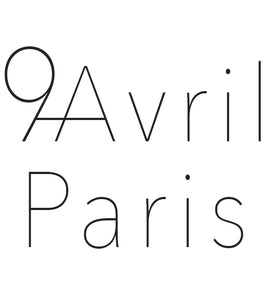Since centuries, chokers have traversed the different chapters of history, and each century presents us with a new example and a new symbolic value of these jewels. We can observe their historical presence in various cultures around the world, including Egyptian, European, Native American, Chinese, and even Indian cultures.
Their symbolism and meaning have undergone rapid changes throughout history, shifting from symbols of political aggression to ornaments specifically used to identify prostitutes, and finally, to complex pieces of jewelry that have become the trend of the season. In this article, we will examine in detail all the significant historical facts and symbolic narratives regarding the importance and meaning of the choker necklaces.
1507: ANNE BOLEYN
La plupart des gens ignorent que c'est Anne Boleyn qui a lancé l'excitante tendance des necklaces ras du cou. Anne Boleyn était sans aucun doute l'une des femmes les plus à la mode de son époque, et dans une société anglaise conservatrice, elle a introduit de nombreuses tendances inspirées par son amour de la mode découvert lors de son séjour à la cour de France.
We always saw her wearing a pretty choker necklace, which can also be seen in her paintings, and this famous necklace was created with beads and a pendant of the letter B, which she also wore around her neck.
Choker Avé Cauris 9Avril Paris
1789: THE FRENCH REVOLUTION
The French Revolution was a tumultuous period of political aggression and revolt against the French monarchy. Among all the symbols used by the French people to express their hatred towards their monarchs and extravagant nobility, the chokers were undoubtedly the most powerful and poignant.

Women began to wear a political dress with a red ribbon around the neck, in tribute to all those who were massacred by the guillotine. This ribbon was worn in several different ways, around the neck like a simple choker, or tied in the back and over the shoulders to create an X.
1860: OLYMPIA BY MANET
In the 1860s, the colliers Chokers were considered ornaments reserved for prostitutes. This statement is evidenced by the famous painting Olympia, painted by Manet in 1863, which depicts a prostitute displaying a ribbon in the shape of a necklace around her neck.
1800-1900: THE VICTORIAN PERIOD
Although chokers are considered symbols of prostitution in some parts of Europe, they enjoy great popularity in England, especially during the Victorian era. Members of the royal family were also seen wearing pearl chokers along with other necklaces and pendants. And as can be seen in Edgar Degas's paintings from the 1870s and 1880s, ballerinas wore chokers in their dance costumes.
The Queen Victoria was seen wearing chokers in the various portraits made during her reign, and the Princess of Wales, Alexandra, was extremely famous for her love of chokers. It is said that she used chokers to hide her scar, which she had after an operation in her childhood. The beautiful Alexandra was extremely aware of the ugliness of this scar and, during her various stays in India, she became passionate about the exotic trends of Indian jewelry, particularly the chokers that she brought back home and which became a true fashion among the women of the court and the nobility.
The princess Alexandra profoundly influenced the fashion of her time and the trends she created, notably her love for chokers, which were showcased for another 50 years or more after her death. Society and noblewomen, as well as other wealthy women of the Victorian era, sported chokers adorned with pearls, crystals, and jewels to create a style fit for a queen!

1920S & 1940S : VINTAGE CHARM
The Roaring Twenties were an opportunity to indulge in the delicate femininity of chokers, and women were seen sporting this trend with ribbons, pearls, crystals, beads, and many other things. However, at the time, they were not called chokers, but rather dog collars.
The dog collars, as they were called in Paris, began to undergo countless variations and soon, women could choose and flaunt them in a wide variety of materials, including ribbon, velvet, pearls, lace, and even diamonds. Needless to say, they were the symbol of elite glamour.
In 1944, Life magazine created an iconic article aimed at reviving the trend of dog collars, which were increasingly worn by dogs and men.
THE 90s: DOG COLLARS BECOME CHOKERS
Comme for all trends, the 90s were the peak of everything that was fashionable, and chokers attracted a lot of attention at that time. At that time, we saw chokers make their way onto the scene with Christina Aguilera and Britney Spears, while Gwyneth Paltrow and others sported them on the red carpet at the Oscars.
Very quickly, chokers underwent a bold gothic transformation and women began to sport chokers with pentagrams, gothic accents, spiked collars, and even silver ball chains. As if that wasn't enough, designers decided to introduce the tattoo choker, which turned out to be an incredibly cute and affordable accessory, and became the most popular ornament at prom in the United States. These tattoo chokers were typically made of plastic and featured a net design with rough textures.
FROM 2015: THE RENEWAL OF THE NECKLACE
It goes without saying that 2015 was the fabulous year that propelled chokers to the forefront of fashion, and since then, they have become a regular accessory on runways. Today, chokers are available in a wide variety of materials, fabrics, patterns, color palettes, embellishments, and textures. You can choose from embroidered floral neckpieces, appliqué chokers, brass, striped, adorned with jewels, beads, heavy chains, metallic details, and even butterflies.
With a history dating back over 500 years, it is astonishing to see how chokers have evolved to become the fierce trend we all showcase today.


